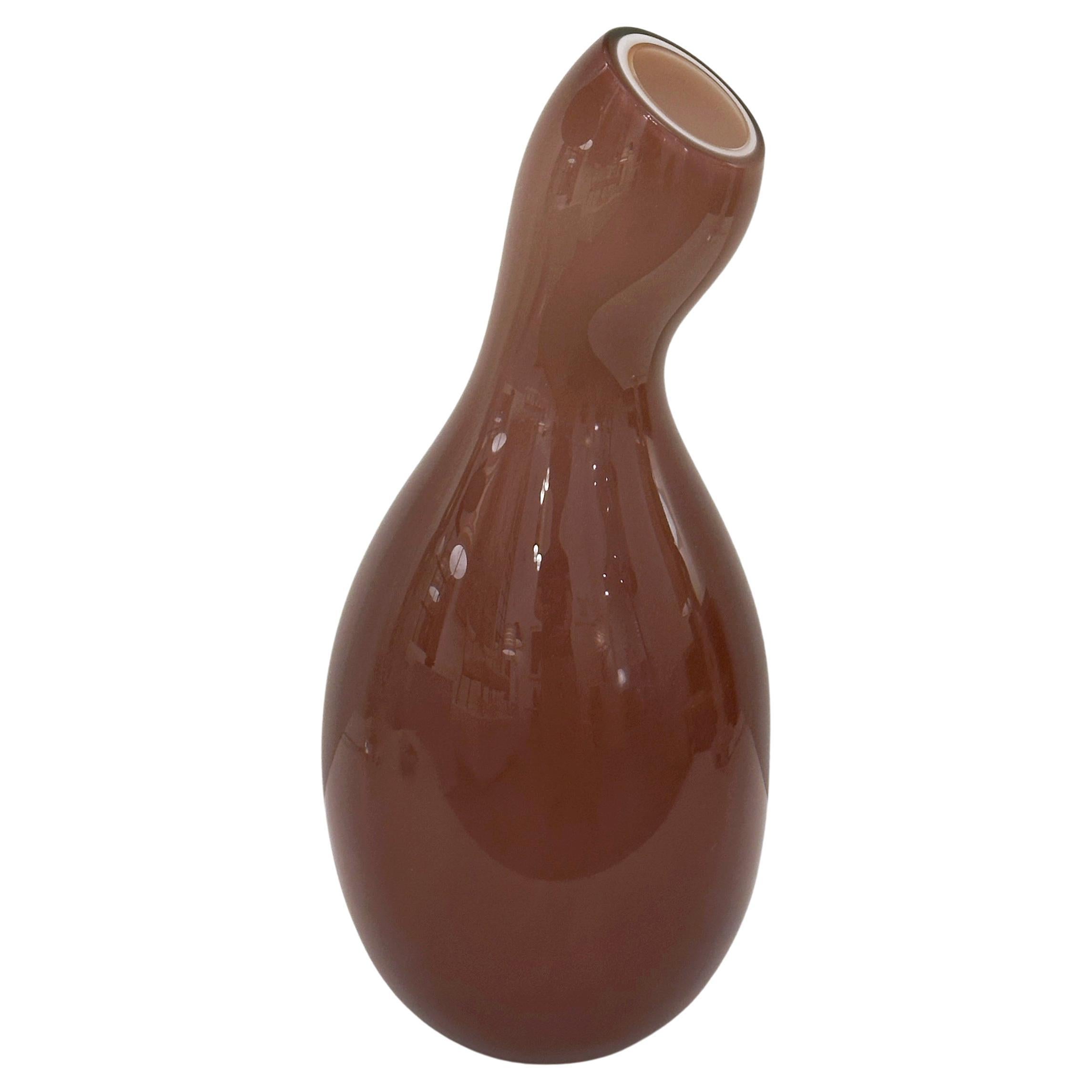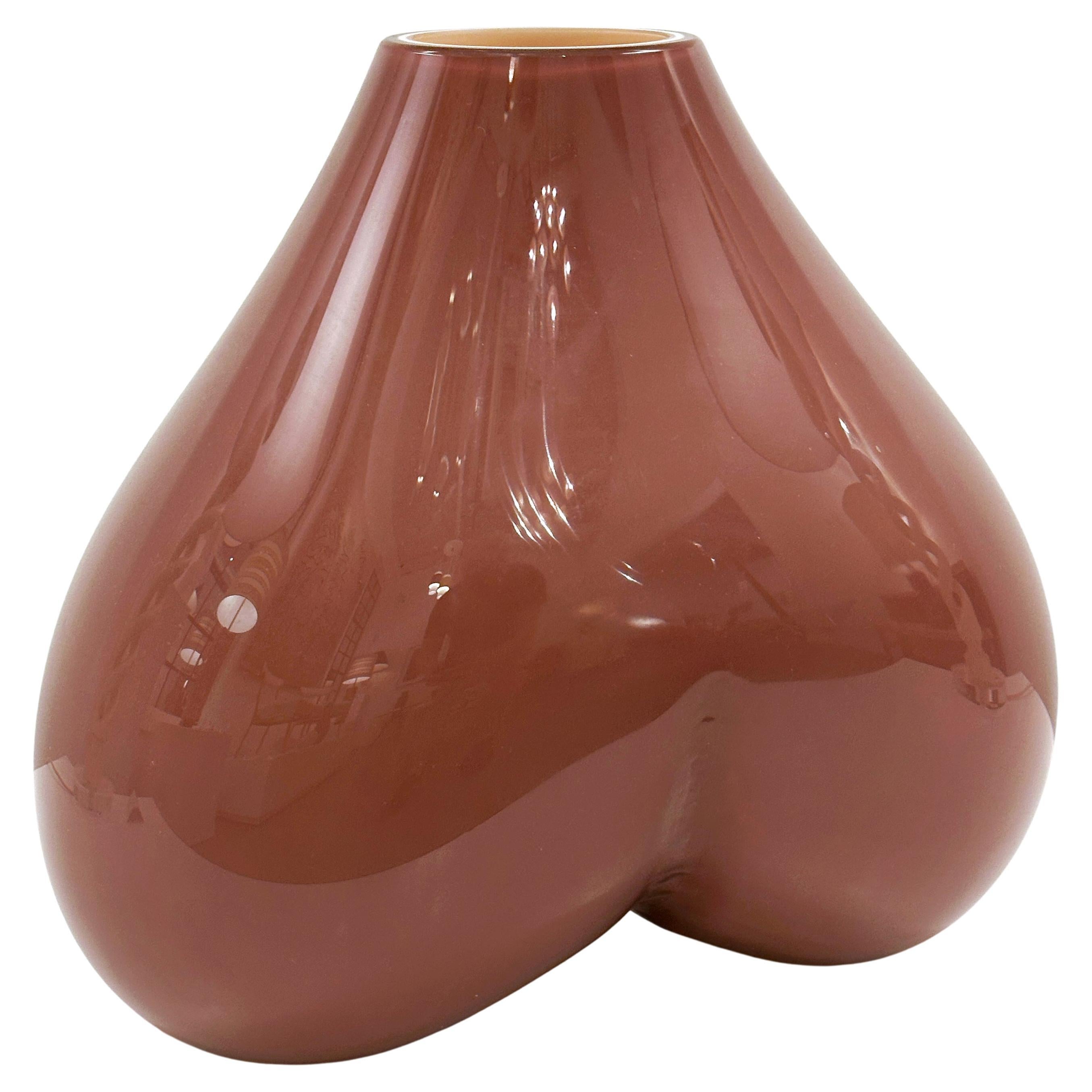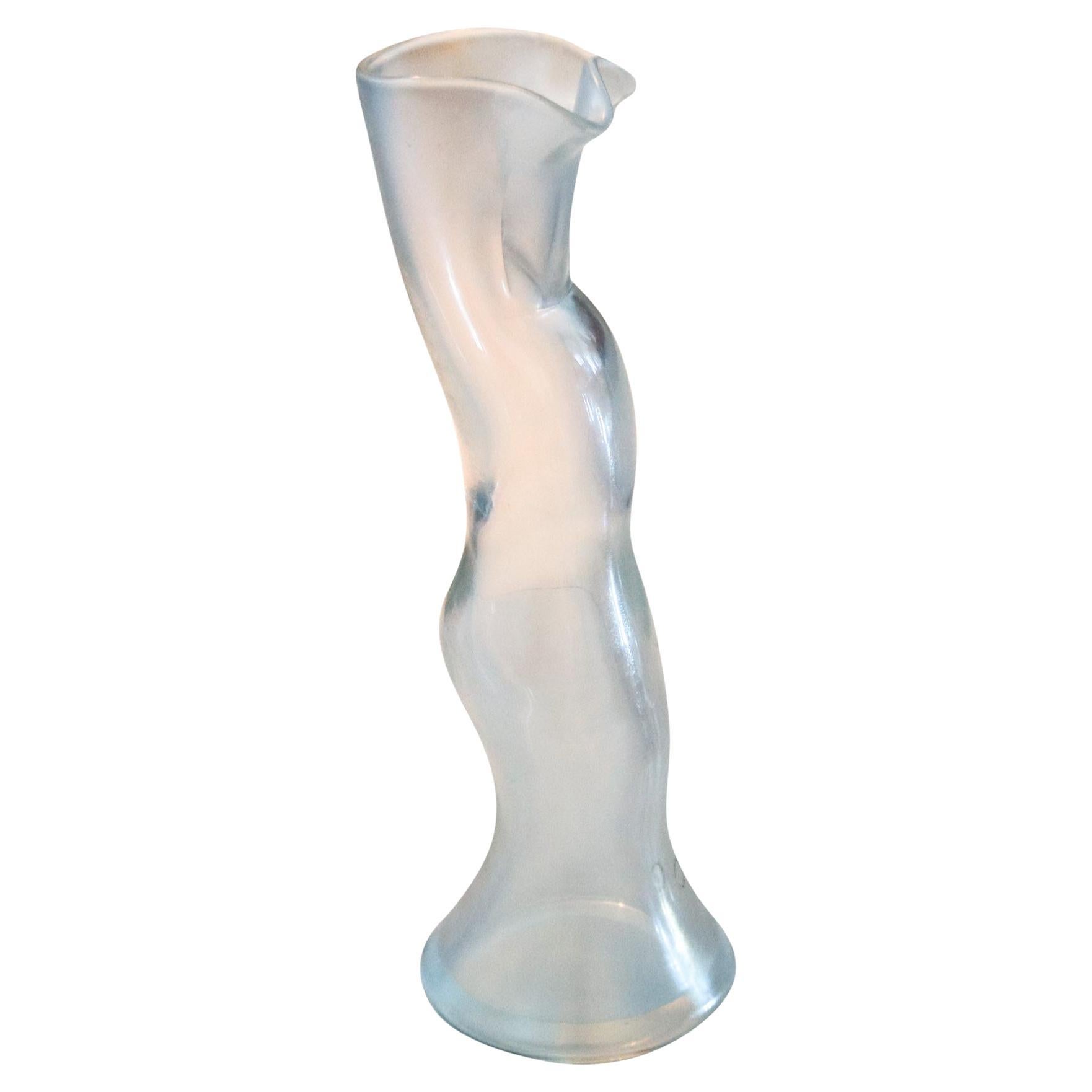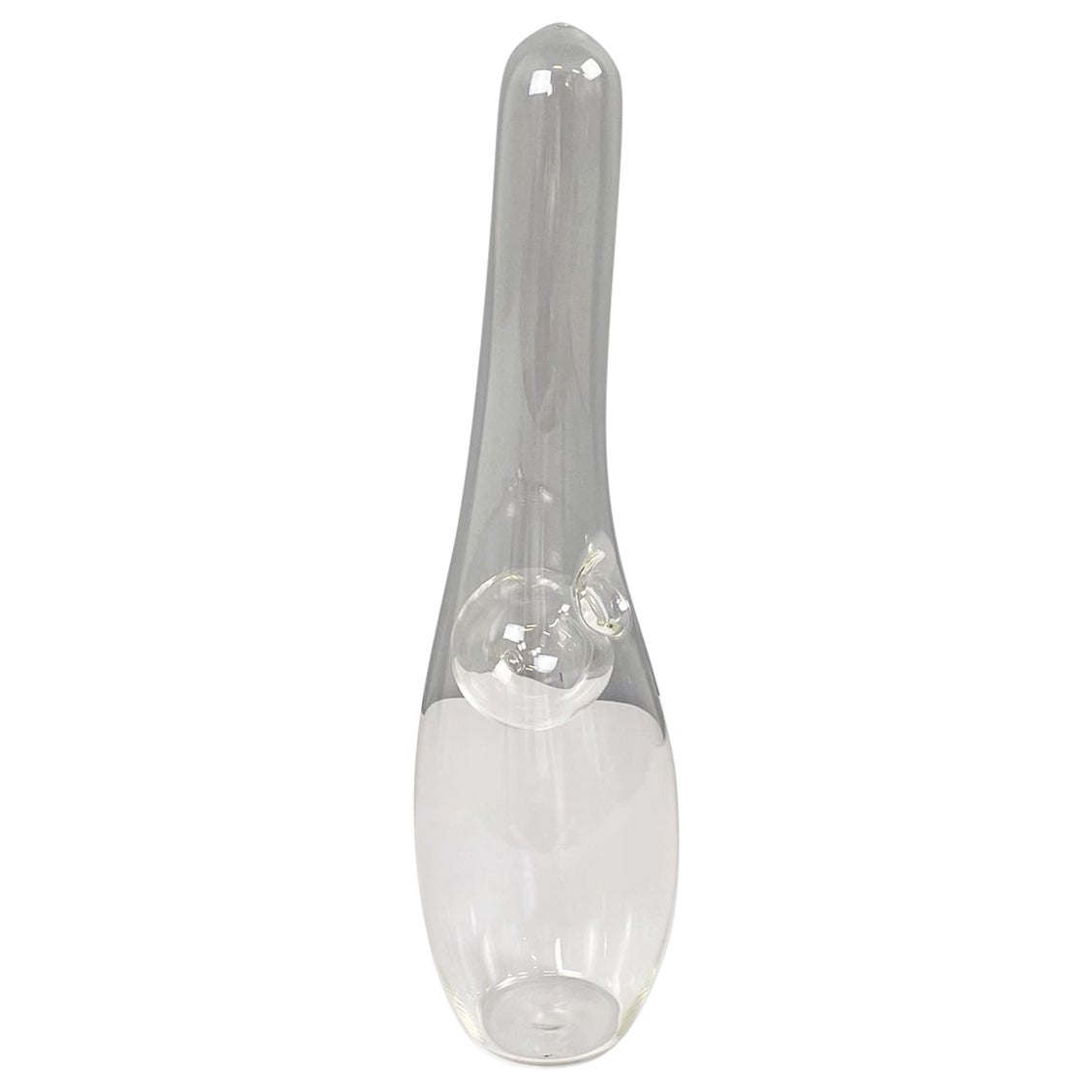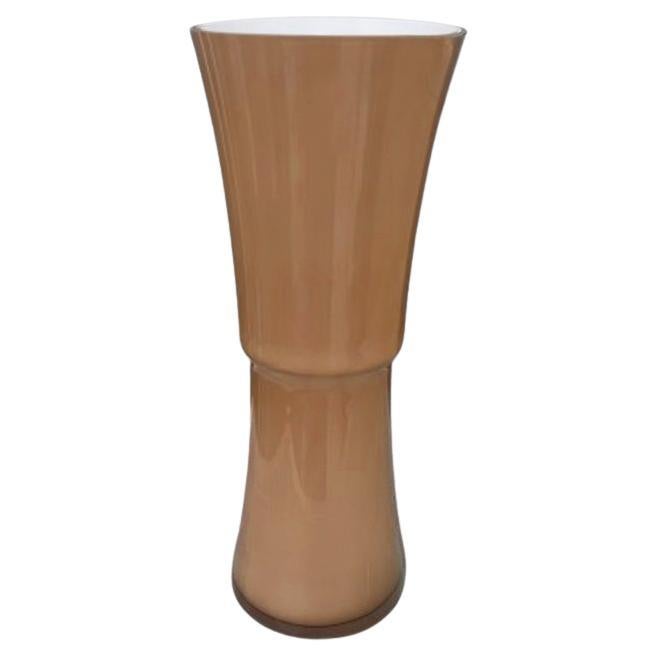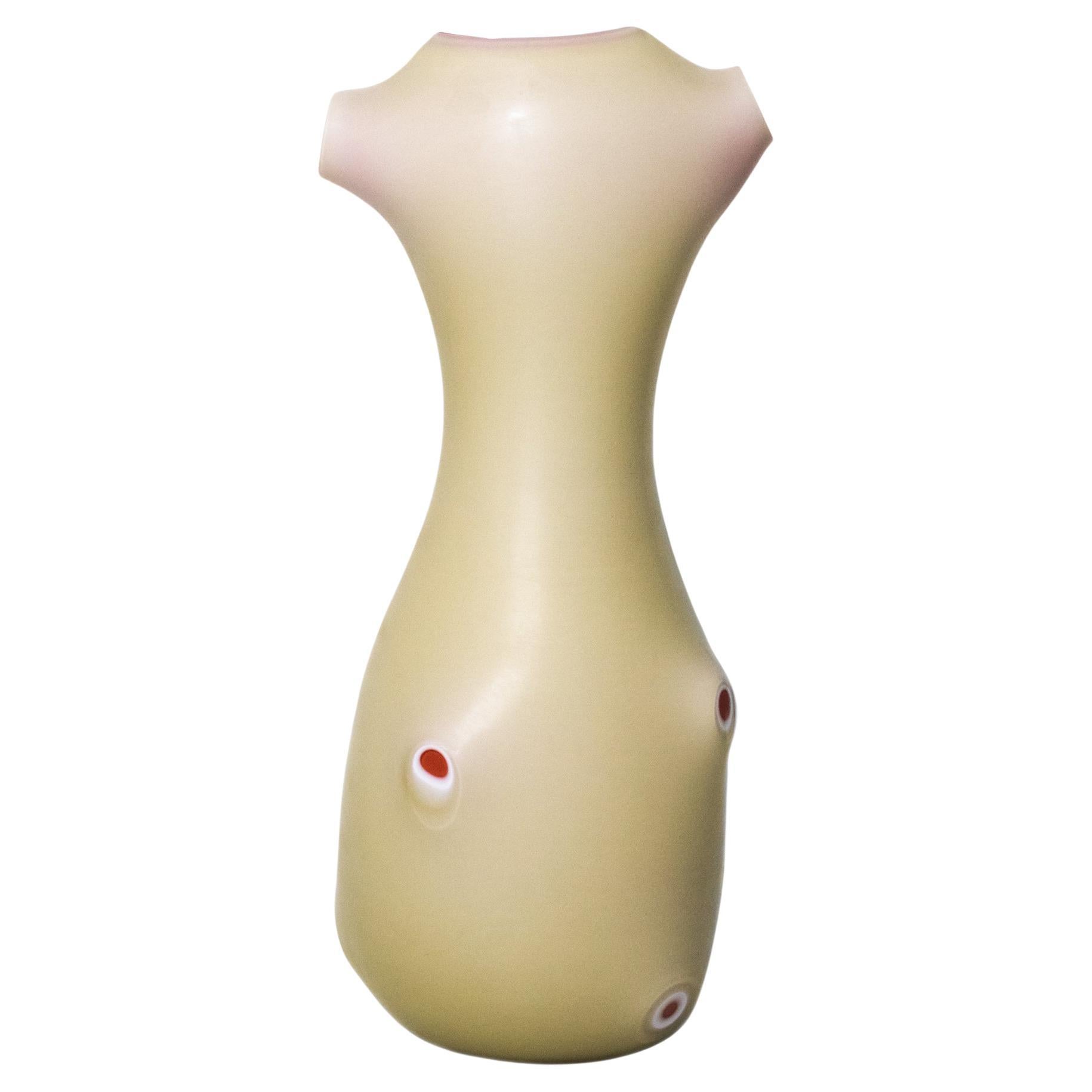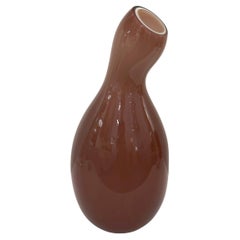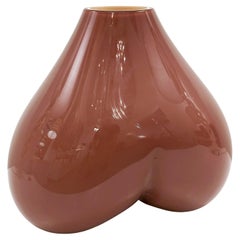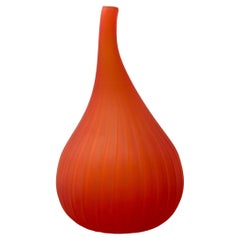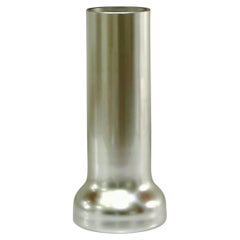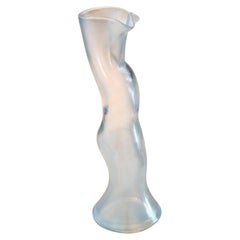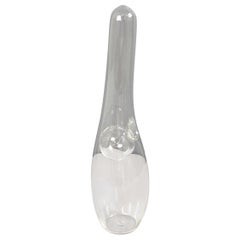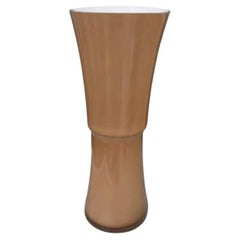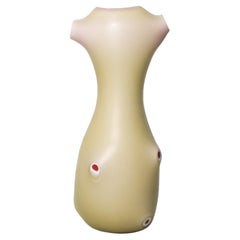Items Similar to Marre Moerel Anatomy Series Signed Edition Corpus Murano Glass Vase Covo, Italy
Want more images or videos?
Request additional images or videos from the seller
1 of 20
Marre Moerel Anatomy Series Signed Edition Corpus Murano Glass Vase Covo, Italy
$1,695
£1,278.20
€1,478.30
CA$2,378.08
A$2,643.38
CHF 1,385.60
MX$32,282.06
NOK 17,298.45
SEK 16,274.61
DKK 11,033.58
About the Item
Marre Moerel Signed and Numbered Limited Edition "Corpus" Murano Glass Vase for Covo, Italy, ca 2001. This vase is part of her Anatomy Series and is numbered #6 of 29. The glass is a light pink color (almost a flesh color) cased with white glass sandwiched with orange glass on the interior.
Marre has said that the shapes were in reference to the beauty of the human body and colors chosen to reflect the variety of skin tones. Highly evocative and intriguing, this design is beautiful and also evokes conversation and thought. A true piece of art!
This vase is part of a project named Smash, and curated by Emmanuel Babled for Covo in 2001. A group of famous designers (James Irvine, Jeffrey Bennet, Jerszy Seymour, Marre Moerel, Richard Hutten, Ritsue Mishima, Stefano Giovannoni, Stephen Burks and Emmanuel Babled) were commissioned to design a limited edition series of handblown glass objects. The purpose of the project was to reinvent Murano Glass, which at that moment had the reputation of being outdated and somewhat kitsch, although of incredible workmanship.
Note that this listing is for one of the glass pieces shown in the set of three group photo. The other listings are available in separate listings here on 1stDibs.
Condition is very good with no cracks, chips, or noticeable scratches. Condition is very good with no cracks, chips, or noticeable scratches. Occasional small imperfections are the result of the craft manufacturing process, and expresses the originality of the product.
Marre Moerel is an internationally acclaimed designer, who has worked for established companies such as Cappellini (IT), Celda (ES), Covo (IT), Offecct (SE), Ozone (JP) or WilsonArt Int. (USA). Her work has featured in many design exhibitions (V&A + Design Museum, London, Superstudio Pui, Milan, + NY, Milan, Tokyo and Stockholm Int. Furniture Design Fairs), and has been published extensively (Habitare, Interni, Blue Print, Elle Decor; Spoon, International Design Yearbook).
She studied furniture design at the Royal College of Art in London. From 1993 till 2002 she lived and worked as a freelance designer in New York, where she also taught at Parsons School of Design. Besides this, she organized and curated annual design exhibitions, both in the New
York and Milan, to promote new and experimental work from up-and-coming designer from around the world (G7, hall 01’02’03). In 2003, to expand her horizons and in search for new inspiration, Moerel moved to Madrid where she’s established her own business. -Source: Marre Moerel
COVO - With the strength of aesthetic tradition which combines the concept of elegance with that of simplicity, COVO, Italian DNA and international roots, has made itself the perfect interpreter of these two terms developing an autonomous and distinctive language, capable of marrying tradition and contemporaneity classicism and avant-garde design. With its first steps through the severity of form and signs exported from Orient, it gives character to its products while at the same time remaining faithful to its origins, enriching them progressively with new and constant stimulation from the world of design. With and sensitive eye, it directs and manages research that ranges from the skilful uses of materials to the giving body to the voices of designers, permitting itself an occasion to go with an ironic spirit into the field of experimentation, without overstepping the limit into useless showmanship. The fantasy of form and attention to materials become the protagonists and the final product shines with a fresh and extremely personal aesthetic without sacrificing functionally. A strong identity founded on a primary need of feasibility, a harmonious marriage of form and content, a brand capable of seducing and conquering the attention of an ever more vast public thanks to the unceasing search for a point of balance, in real and not apparent terms. -Source: COVO
- Creator:covo (Manufacturer),Marre Moerel (Designer)
- Dimensions:Height: 6 in (15.24 cm)Width: 19 in (48.26 cm)Depth: 6 in (15.24 cm)
- Style:Modern (Of the Period)
- Materials and Techniques:
- Place of Origin:
- Period:
- Date of Manufacture:2001
- Condition:Wear consistent with age and use. Condition is very good with no cracks, chips, or noticeable scratches. Occasional small imperfections are the result of the craft manufacturing process, and expresses the originality of the product.
- Seller Location:Cathedral City, CA
- Reference Number:Seller: OC 92101stDibs: LU8352236572772
About the Seller
5.0
Gold Seller
Premium sellers maintaining a 4.3+ rating and 24-hour response times
Established in 2000
1stDibs seller since 2023
23 sales on 1stDibs
Typical response time: <1 hour
- ShippingRetrieving quote...Shipping from: Cathedral City, CA
- Return Policy
Authenticity Guarantee
In the unlikely event there’s an issue with an item’s authenticity, contact us within 1 year for a full refund. DetailsMoney-Back Guarantee
If your item is not as described, is damaged in transit, or does not arrive, contact us within 7 days for a full refund. Details24-Hour Cancellation
You have a 24-hour grace period in which to reconsider your purchase, with no questions asked.Vetted Professional Sellers
Our world-class sellers must adhere to strict standards for service and quality, maintaining the integrity of our listings.Price-Match Guarantee
If you find that a seller listed the same item for a lower price elsewhere, we’ll match it.Trusted Global Delivery
Our best-in-class carrier network provides specialized shipping options worldwide, including custom delivery.More From This Seller
View AllMarre Moerel Anatomy Series Corpus Cavernosum Murano Glass Vase Covo, Italy
By covo, Marre Moerel
Located in Cathedral City, CA
Marre Moerel Signed and Numbered Limited Edition "Corpus Cavernosum" Murano Glass Vase for Covo, Italy, ca 2001. This vase is part of her Anatomy Series and is numbered #2 of 29. The glass is a deep purple color (eggplant or wine) cased with white glass sandwiched with a pink/clear glass on the interior.
Marre has said that the shapes were in reference to the beauty of the human body and colors chosen to reflect the variety of skin tones. Highly evocative and intriguing, this design is beautiful and also evokes conversation and thought. A true piece of art!
This vase is part of a project named Smash, and curated by Emmanuel Babled for Covo in 2001. A group of famous designers (James Irvine, Jeffrey Bennet, Jerszy Seymour, Marre Moerel, Richard Hutten, Ritsue Mishima...
Category
21st Century and Contemporary Italian Modern Abstract Sculptures
Materials
Art Glass, Blown Glass, Murano Glass
Marre Moerel Anatomy Series Signed Edition Gluteus Murano Glass Vase Covo, Italy
By covo, Marre Moerel
Located in Cathedral City, CA
Marre Moerel Signed and Numbered Limited Edition "Gluteus" Murano Glass Vase for Covo, Italy, ca 2001. This vase is part of her Anatomy Series and is numbered #5 of 29. The glass is a deep purple color (eggplant or wine) cased with white glass sandwiched with a pink/clear glass on the interior.
Marre has said that the shapes were in reference to the beauty of the human body and colors chosen to reflect the variety of skin tones. Highly evocative and intriguing, this design is beautiful and also evokes conversation and thought. A true piece of art!
This sculpture is part of a project named Smash, and curated by Emmanuel Babled for Covo in 2001. A group of famous designers (James Irvine, Jeffrey Bennet, Jerszy Seymour, Marre Moerel, Richard Hutten, Ritsue Mishima...
Category
21st Century and Contemporary Italian Modern Abstract Sculptures
Materials
Art Glass, Blown Glass, Murano Glass
Renzo Stellon for Salviati Orange Satin Finish "Drops" Vase 2003
By Salviati, Renzo Stellon
Located in Cathedral City, CA
Renzo Stellon for Salviati Orange Satin Finish "Drops" Vase 2003
This is a beautiful hand-blown reddish orange glass vase with a satin finish signed Salviati 2003 (first designed in...
Category
Early 2000s Italian Modern Vases
Materials
Blown Glass
Karim Rashid for Leonardo Germany Limited Edition New Move Glass Vase, ca 1999
By Karim Rashid
Located in Cathedral City, CA
Karim Rashid for Leonardo Germany Limited Edition New Move Silver Glass Vase, ca 1999.
Measures 8” high, base 3-1/2” wide, and mouth 2-1/4” wide.
There is a small scratch of silver finish/coating on glass (we've posted an image of the interior and exterior at the area of the scratch). There is also a faint area of small blemishes at the base See images for more detail.
If there’s one thing karim rashid hates, it’s trophies. The 40-year-old designer has more than 40 of them, from big international ones like the 1999 George Nelson Award (given for breakthrough furniture design), to quaint little Canadian ones like Designer of the Year 2001. “It came with a little pin,” says Rashid, “and a … a … very nice …” He tries to describe the shape of the award with his hands but gives up. “It’s time that whole trophy thing changes. It’s kitsch. They’re functionless things.” Rashid was asked to design one for the DaimlerChrysler Design Awards (he’s a past recipient). “I was going to make it electro-luminescent. When the lights go out, it has a sensor so it turns on,” he says. But the trophy-as-night-light, a reminder of one’s worth in the darkest hours, didn’t impress Chrysler’s people. He never heard back.
They may well be gnawing their knuckles over that decision right now because Rashid’s conquest of the realm of product design is all but complete. A lush and suitably worshipful retrospective of his work, Karim Rashid: I Want to Change the World (Thames & Hudson; 249 pages), hits Australasian bookstores this month. There was a crowd around anything with his stamp on it-including stools, chess sets and storage units-at the recent International Contemporary Furniture Fair in New York City. More than 2 million North Americans are throwing their rubbish into a receptacle he designed, while 750,000 or so park their rears on one of his cheapo plastic chairs. It’s not just in North America. He has been dubbed Der Poet des Plastiks by a retailer in Germany and the prolifico progettista Americano by Interni magazine in Italy.
Trophies he may despise, but accolades Rashid can handle. The problem with being the Most Famous Industrial Designer in All the Americas is that you’re still less famous than someone who got kicked off Survivor the first week. Most people cannot name the designer of one nonclothing item in their homes. Rashid, who was born in Egypt, raised in Canada and is living in New York City, is more than happy to bring an end to this anonymity. Not just because he wants to be famous, although there seems to be that, but because he believes design should be a bigger part of the social discourse. “I have been almost alone in this country, trying to make design become a public subject,” he says.
His chief method of persuasion is to make the banal better so that people notice design more. He likes creating expensive furniture and perfume bottles just fine, but what really gets his juices going is the everyday: manhole covers, a cremation urn, disposable cigarette lighters, garbage bins, salt and pepper shakers, plastic pens. “I want American Standard to come to me to do the toilets for Home Depot,” he says.
In many ways Rashid is more like an itinerant industrial evangelist than a designer. He traveled 200 days last year. He claims to have been to every major mall in America, where he signs his products in high-end design stores and trolls about observing humans interacting with the objects around them. He has taught at design schools for more than a decade, and his work has been in 11 art shows in the past eight months. But mostly he has proselytized the corporate barbarians. And like any good missionary, he has learned to speak the language of his converts. One of the first things he does when he gets new clients is tour their factories to understand their manufacturing capacity. He also visits the retail outlets to see how the product might be displayed. And he really knows how to sell, especially himself. “I work with a guy in L.A.,” says Rashid, declining to name him. “He made a lot of really bad furniture. His business was hand-to-mouth. I proposed seven or eight projects. The pieces I’ve done for him have already become iconic.” The subtitle of his monograph, I Want to Change the World, is not ironic, just characteristically immodest.
“Most industrial-design studios try to interpret a client’s needs and come up with a style,” says Paul Rowan, co-founder of housewares manufacturer Umbra. “Karim has his own personal vision.” It helps that Rashid’s vision incorporates things that Rowan needs, like a design that will stack and ship easily and that creates little waste in the making.
Rashid’s father was a set designer for Canadian TV who rearranged the family furniture every Sunday. So perhaps it was ordained that Karim would grow up to become one of the pioneers in non-cheesy plastic, making objects that have energy and personality but aren’t wacky. He, like many of his generation, has championed the could-only-be-designed-with-computers blob. But his is not just a blob for its own sake. His Oh Chair...
Category
1990s German Minimalist Vases
Materials
Blown Glass
Michael Lax Design Grainware METAAL Vase, circa 1992
By Michael Lax
Located in Cathedral City, CA
Measures 12-3/4” high, 7-1/2” wide at the mouth, 2-7/8” wide at the base.
Stamped on base
METAAL
Grainware c 1992
Michael Lax Design
ML-4012
There are some light scuffs and scratches especially toward the base, patina to finish. See images for detail.
Michael Lax (1929–1999) was an American industrial designer who created household products for companies such as Copco, Lightolier, Dansk, Salton, Metaal, Mikasa, Tupperware, and American Cyanamid. Several of his best-known products, including the Lytegem lamp by Lightolier and the Copco enamel...
Category
1990s American Post-Modern Vases
Materials
Aluminum
Waterford Crystal Contemporary Opal and Amber "Evolution" Vase
By Waterford Crystal
Located in Cathedral City, CA
Waterford Crystal Contemporary Amber and Opal "Evolution" Vase
This is a gorgeous opaline crystal vase with amber design throughout and a swirl motif on the base by famed Irish glas...
Category
2010s Polish Modern Vases
Materials
Crystal
You May Also Like
VENINI By Fulvio Bianconi Murano Women Torso Vase Soffiato Iridescent Art Glass
By Venini, Fulvio Bianconi
Located in Miami, FL
Women torso art glass vase by Fulvio Bianconi for Venini.
This is a very rare tall art glass vase created in Murano at the Venini glass company by Fulvio Bianconi. The art-glass vas...
Category
Vintage 1970s Italian Mid-Century Modern Vases
Materials
Art Glass
$3,325 Sale Price
30% Off
Italian modern Glass vase with irregular round shape by Roberto Faccioli, 1990s
Located in MIlano, IT
Italian modern Glass vase with irregular and round shape by Roberto Faccioli, 1990s
Round base vase in finely handcrafted glass. The structur...
Category
1990s Italian Modern Vases
Materials
Glass
2000s Astonishing Vase by Carlo Nason in Murano Glass. Made in italy
Located in Milano, IT
Astonishing Vase by Carlo Nason in Murano Glass. Made in italy made in 2005. The vase has the murano label and it's signed at the bottom C. Nason. The vase is in excellent condition....
Category
Early 2000s Italian Modern Vases
Materials
Murano Glass
$336 Sale Price
20% Off
Venini by Emmanuel Babled 2004 Women Torso Tall Vase in Cased Art Glass
By Venini, Emmanuel Babled
Located in Miami, FL
Art glass vase designed by Emmanuel Babled (1967-) for Venini.
An extremely rare artistic vase, created in the island of Murano by the sculptor Emmanuel Babled, back in the 2004. This sculptural tall vase is part of a limited edition of only 9 piece made by the Venini company from Venice. It is made in the shape of a sublime woman torso, blown in 3 colors of cased glass and finished with a delicate wheel carving.
Technique: Blown art glass, triple cased, etched and carved at the wheel.
Measures: 450.85 by 196.85 mm (17.75 by 7.75 Inches)
Edition: Number 4 of 9.
Signatures: Etched at the bottom, "Venini 2004 4/9 EMM. BABLED". with the original Venini decal label.
Emmanuel Babled was born in France in 1967. He studied Industrial Design at Istituto Europeo di Design in Milan, graduating in 1989 and founding his own design studio in 1992. In 2010 Emmanuel Babled Studio moved to Amsterdam after many years in Milan. Since the start, he has developed a wide range of unique pieces and limited editions in self-production and for prestigious manufacturers such as Venini, Baccarat, Rosenthal and Covo. These pieces are part of private and public collections around the world. At the same time he has also designed Industrial products, furniture and lighting. His clients include Baccarat, Rosenthal, Venini, Bulgari, Iittala, Dupont de Nemours, Fontana Arte, Oluce, I&I, Laurent Perrier...
Category
21st Century and Contemporary Italian Modern Vases
Materials
Art Glass, Blown Glass, Murano Glass
$13,265 Sale Price
30% Off
Italian Murano Glass Vase Elmetto Model by Seguso.
By Seguso Vetri d'Arte
Located in Milan, Italy
Murano glass vase by Seguso. Exhibited at Tingo design gallery in 2008 for the exhibition Murano a go-go. Out production. Original label and signed.
Category
Vintage 1940s Italian Modern Vases
Materials
Murano Glass
Bubble Vase in Hand Blown Murano Glass by Luca Nichetto & Gianpietro Gai
By Luca Nichetto and Giampietro Gai, Salviati
Located in Venezia, IT
Cased blown and hand-formed glass elements.
Limited edition: 101 pieces.
Category
21st Century and Contemporary Italian Modern Vases
Materials
Glass
